[javascript protected email address]
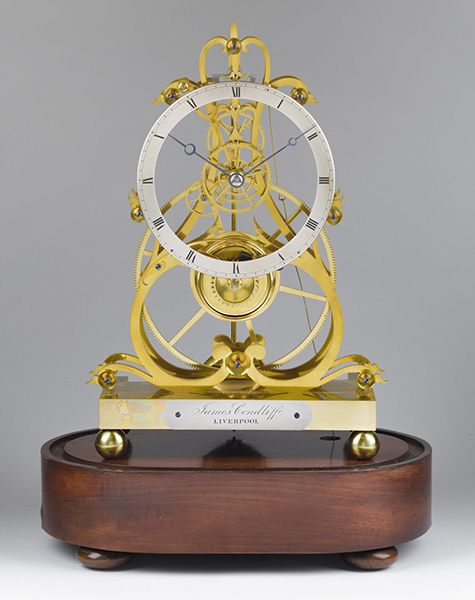
James Condliff, Liverpool.

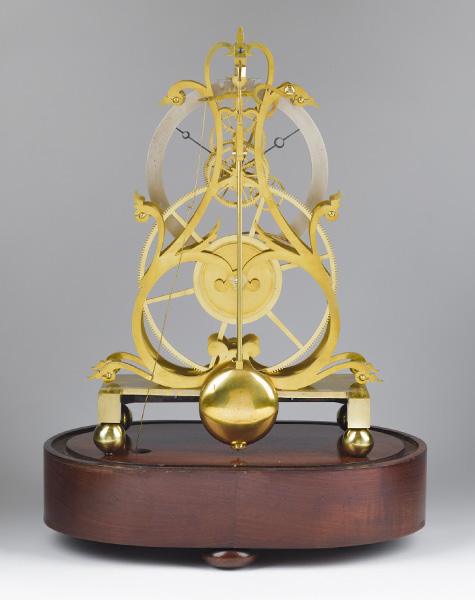
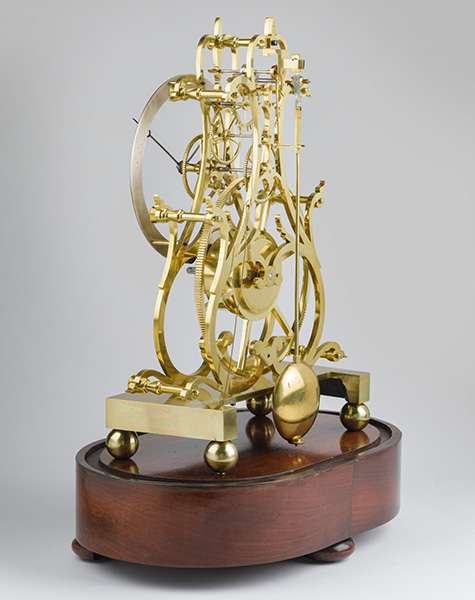
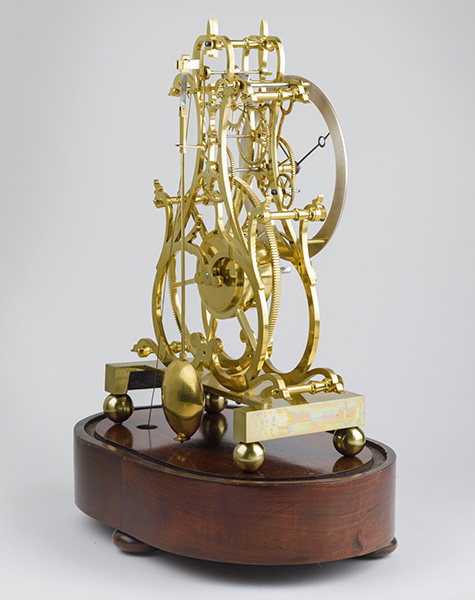
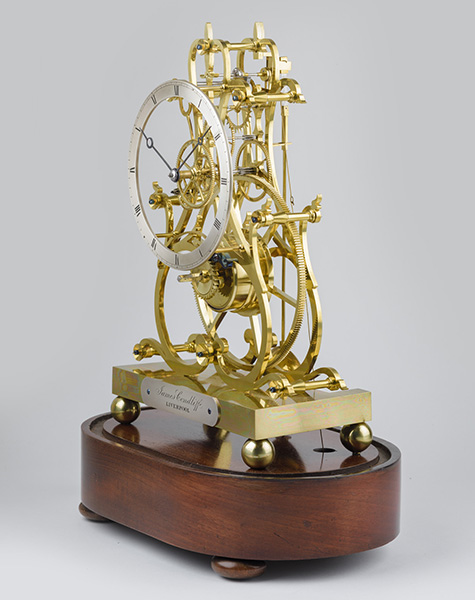
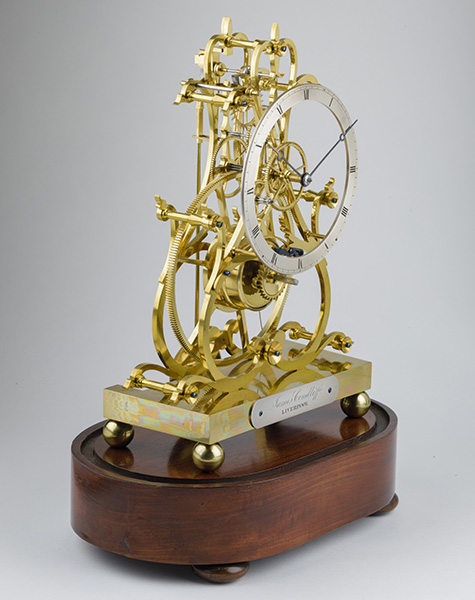
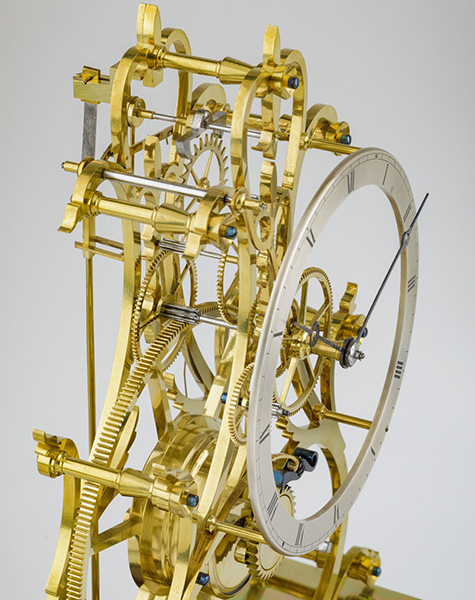
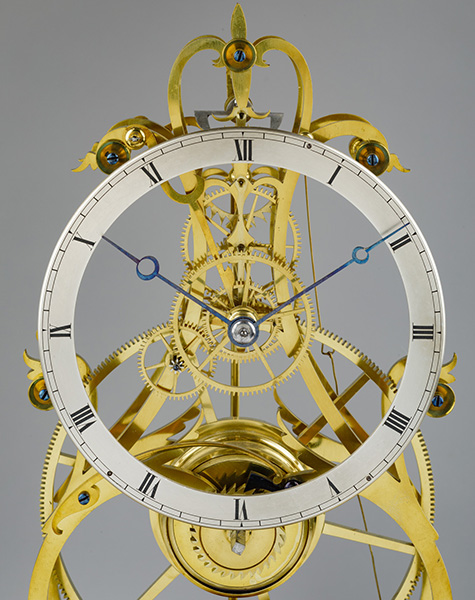
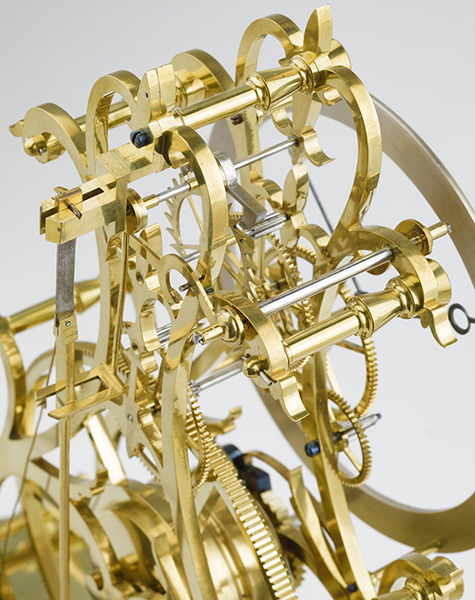
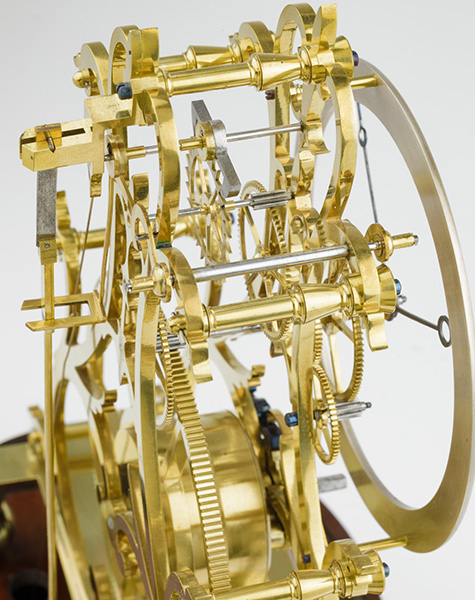
Circa 1860
Price on application. Please get in contact.
14-½ inches high over the dome
A very find skeleton clock with passing strike. Dial The narrow silvered brass chapter ring has Roman numerals and outer minute track with Breguet-style blued steel hands. Frame The clocks sits on a rectangular brass base on ball feet and applied to the base is the signature plaque signed James Condliff Liverpool; supporting the base is the original oval mahogany plinth housing the coiled gong for the passing strike. The delicate scrolling movement frame has six slender vase-shaped pillars which are pinned at the back and secured at the front with blued steel screws. Movement The movement has a single spring barrel with an oversized greatwheel with six crossings, the wheel train has five crossings including the escape wheel which has a deadbeat escapement with the original pendulum. This Clock This skeleton clock by Condliff is a particularly good example because it is entirely complete and in perfect ready-to-own condition. The frame, wheels, pendulum, dial, hands, signature, and the mahogany base are all original. Many skeleton clock lose their original bases when a dome is broken, but in this instance the base and dome is entirely original, and the base is a particularly pleasing shape and colour. James Condliff James Condliff is rightly regarded as the Father of English skeleton clockmaking. Whilst he was not the first Englishman to make the first skeleton clock, he was undoubtedly the first English clockmaker to specialise in its art form. Condliff set up his first Liverpool workshop in 1816, initially in Garrard Street, moving in 1823 to Fraser Street where he remained. Condliff's skeleton clocks were elegant, brilliantly conceived and always of the finest quality. These clocks displayed detailed technical innovation, which when combined with Condliff's clever eye for detail, ensured his clocks were a commercial success. Each of his clocks was individually made, not one is exactly alike – even his relatively simple timepieces like this example. London clockmakers were inspired by his innovative skeleton clocks and seeing commercial potential they began making in a far larger scale with the result that by the third quarter of the 19th century there was a large-scale production of new and imaginative skeleton clocks by Clerkenwell makers like Smiths, Moore & Sons and Evans.
